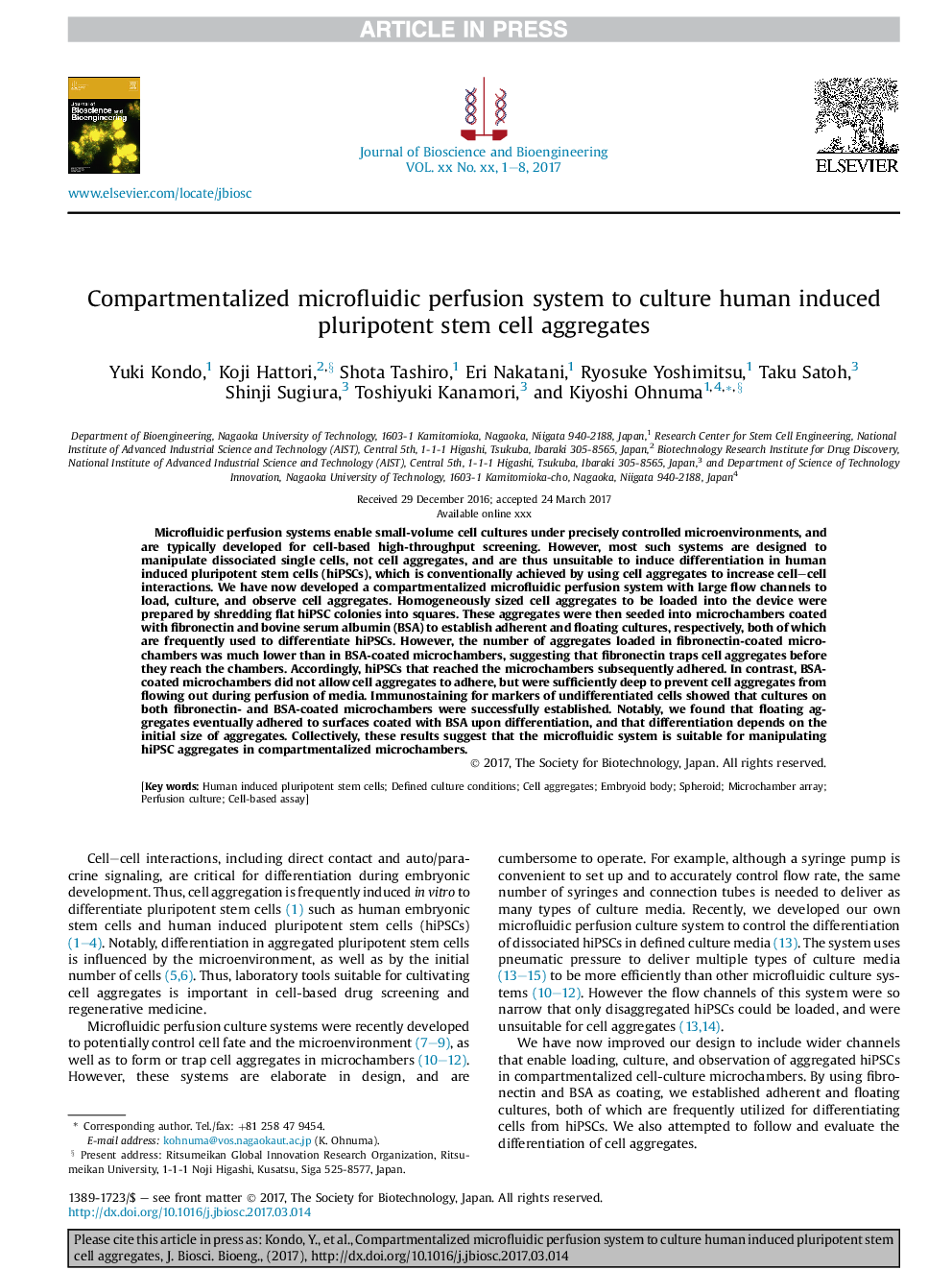| کد مقاله | کد نشریه | سال انتشار | مقاله انگلیسی | نسخه تمام متن |
|---|---|---|---|---|
| 4753295 | 1416551 | 2017 | 8 صفحه PDF | دانلود رایگان |
عنوان انگلیسی مقاله ISI
Compartmentalized microfluidic perfusion system to culture human induced pluripotent stem cell aggregates
ترجمه فارسی عنوان
سیستم پرفیوژن میکرو فلوئیدیک مجتمع شده برای کشت سلول های بنیادی پلورپوفنت ایجاد شده توسط انسان
دانلود مقاله + سفارش ترجمه
دانلود مقاله ISI انگلیسی
رایگان برای ایرانیان
کلمات کلیدی
سلول های بنیادی چندجملهای القا شده توسط انسان، شرایط فرهنگی تعریف شده، ترکیبات سلولی، جنین جنین، اسپیراید، آرایه میکروکامتر، فرهنگ پرفیوژن، آزمایش خون مبتنی بر سلول،
موضوعات مرتبط
مهندسی و علوم پایه
مهندسی شیمی
بیو مهندسی (مهندسی زیستی)
چکیده انگلیسی
Microfluidic perfusion systems enable small-volume cell cultures under precisely controlled microenvironments, and are typically developed for cell-based high-throughput screening. However, most such systems are designed to manipulate dissociated single cells, not cell aggregates, and are thus unsuitable to induce differentiation in human induced pluripotent stem cells (hiPSCs), which is conventionally achieved by using cell aggregates to increase cell-cell interactions. We have now developed a compartmentalized microfluidic perfusion system with large flow channels to load, culture, and observe cell aggregates. Homogeneously sized cell aggregates to be loaded into the device were prepared by shredding flat hiPSC colonies into squares. These aggregates were then seeded into microchambers coated with fibronectin and bovine serum albumin (BSA) to establish adherent and floating cultures, respectively, both of which are frequently used to differentiate hiPSCs. However, the number of aggregates loaded in fibronectin-coated microchambers was much lower than in BSA-coated microchambers, suggesting that fibronectin traps cell aggregates before they reach the chambers. Accordingly, hiPSCs that reached the microchambers subsequently adhered. In contrast, BSA-coated microchambers did not allow cell aggregates to adhere, but were sufficiently deep to prevent cell aggregates from flowing out during perfusion of media. Immunostaining for markers of undifferentiated cells showed that cultures on both fibronectin- and BSA-coated microchambers were successfully established. Notably, we found that floating aggregates eventually adhered to surfaces coated with BSA upon differentiation, and that differentiation depends on the initial size of aggregates. Collectively, these results suggest that the microfluidic system is suitable for manipulating hiPSC aggregates in compartmentalized microchambers.
ناشر
Database: Elsevier - ScienceDirect (ساینس دایرکت)
Journal: Journal of Bioscience and Bioengineering - Volume 124, Issue 2, August 2017, Pages 234-241
Journal: Journal of Bioscience and Bioengineering - Volume 124, Issue 2, August 2017, Pages 234-241
نویسندگان
Yuki Kondo, Koji Hattori, Shota Tashiro, Eri Nakatani, Ryosuke Yoshimitsu, Taku Satoh, Shinji Sugiura, Toshiyuki Kanamori, Kiyoshi Ohnuma,
